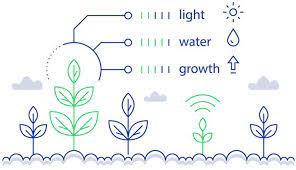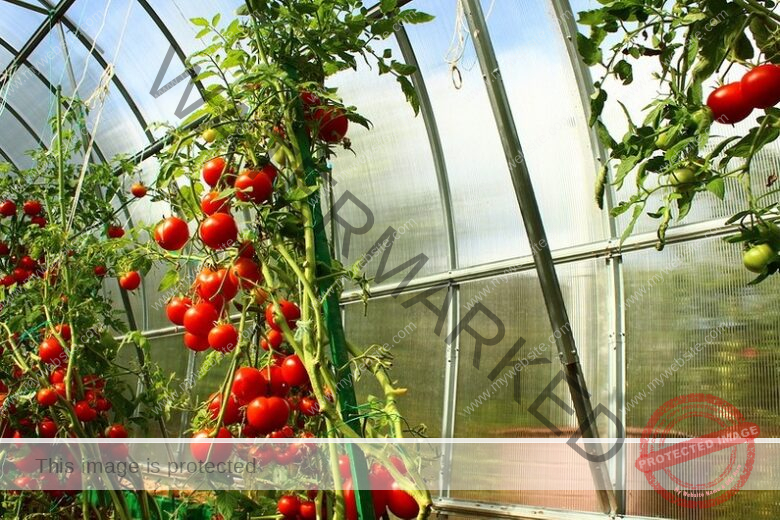South Africa is a diverse country with varied climates, making it an ideal place for cultivating a wide variety of plants. Plant cultivation in South Africa is heavily influenced by the local climate, and understanding the regional climate patterns is key to successful plant cultivation.
South Africa has a semi-arid climate and experiences both hot and cold temperatures throughout the year, making climate considerations essential for successful plant cultivation.
This article will explore the various climate considerations that need to be taken into account when cultivating plants in South Africa, from choosing the right variety of plants to understanding how to manage the soil. By understanding the local climate, you can ensure that their plants can thrive and produce a good yield.
Climate Consideration for Plant Cultivation in South Africa [Farmers Guide]
South Africa lies in the subtropical zone, and its climate varies from Mediterranean to semi-arid. The country has a wide range of climatic conditions, from the desert of the Northern Cape Province to the subtropical climate of the Eastern Cape and KwaZulu-Natal provinces.
The climate in South Africa can be characterized as subtropical, with warm and wet summers and cool, dry winters. Plant cultivation in South Africa is affected by the climate, and you must take into consideration the 6 climate considerations which are prevailing temperature, rainfall, Soil type, and other climatic factors such as wind, light, and humidity.
#1. Temperature
Temperature is another important factor to consider when cultivating plants in South Africa. The country has three main climatic zones, which are distinguished by their temperature extremes. The warm temperate zone has an average annual temperature of between 12 and 21 degrees Celsius.
The subtropical zone has an average annual temperature of between 16 and 25 degrees Celsius, while the subtropical highlands have an average annual temperature of between 8 and 17 degrees Celsius.
Most crops require a moderate temperature range of 15-25°C, and temperatures outside this range can cause crops to fail. For example, temperatures above 25°C can cause seedlings to be stunted, while temperatures below 15°C can cause flower buds to fail to open.
#2. Rainfall
Rainfall is an important factor to consider when planning plant cultivation in South Africa, as most crops require adequate moisture to grow. Many crops, such as maize and wheat, thrive in areas with an annual rainfall of between 500 and 1000mm. In contrast, some crops, such as olives and citrus, require higher rainfall of between 1000 and 2000mm per year.
The country has two main seasons of rainfall: a summer rainy season from October to March, and a winter dry season from April to September. The amount of rainfall varies significantly depending on the region, with the western and northern parts of the country generally experiencing higher levels of precipitation than the eastern and southern parts.
It is also important to be aware of the potential for localized flooding in some areas during the summer months as a result of heavy rainfall.
#3. Soil Type
Another climate consideration for plant cultivation in South Africa is soil type. The soil type in the different regions of South Africa varies greatly, from sandy soils in the east to clay soils in the west.
It is important to consider the type of soil when selecting plants for cultivation, as different plants will thrive in different types of soil. For example, some plants may prefer sandy soils, while others may require more moisture or nutrients for optimal growth.
#4. Sunlight
Sunlight is essential for plant growth, and the amount of sunlight available in South Africa can vary significantly depending on the region and season. Generally, the western and northern parts of the country receive more sunlight than the eastern and southern parts. In addition, the amount of sunlight available can also be affected by cloud cover and other weather conditions. Too much light can cause crops to overheat and wilt
#5. Wind
Wind plays an important role in plant growth as it helps to disperse pollen, reduce the temperature of the environment, and reduce humidity. Wind speeds in South Africa vary depending on the region but generally range from 6 to 8 m/s.
High winds can cause damage to plants, particularly if they are not well-anchored. Wind can also cause water loss from plants, leading to dehydration and wilting. To protect plants from high winds, farmers should use windbreaks such as hedges, walls, or trees.
#6. Humidity
The amount of humidity in South Africa is also highly variable, as the climate is influenced by the ocean and the mountains. Generally, the eastern parts of the country are more humid than the western parts. High humidity can cause fungal diseases and mold, which can lead to crop losses.
To reduce humidity, farmers should water their plants in the morning, when humidity is usually lower. In addition, high humidity can cause fungal diseases to spread more quickly, while low humidity can cause crops to dehydrate and die.
Climate Change In South Africa
Climate change is a major threat to the well-being and future of South Africa. This is due to the country’s geographic location and its heavily populated, low-lying coastal regions.
South Africa is highly dependent on its natural resources for its economic and social development, meaning that any changes to the climate could have disastrous consequences for the country.
The most significant impacts of climate change in South Africa include increases in temperatures, changes to rainfall patterns, rising sea levels, and increases in extreme weather events, such as floods and droughts.
Average temperatures in South Africa have risen by more than 1.5 degrees Celsius since 1960, with the changes being most pronounced in the western, northern, and eastern parts of the country. This has resulted in reduced snow cover and changes to the seasonal patterns of the country.
These changes are expected to continue in the future, resulting in more extreme weather events, such as floods and droughts.
In addition, rising sea levels have caused considerable damage to the country’s coastal regions, leading to beach erosion and flooding in some areas. Moreover, changes to the climate have also caused changes to the ecosystems of the region, with many species of plants and animals becoming threatened or endangered.
The South African government has taken steps to mitigate the effects of climate change, such as introducing policies to reduce emissions, developing renewable energy sources, and investing in adaptation measures. However, much more needs to be done to ensure the country’s long-term resilience against the effects of climate change.
Climate Smart Agriculture
Climate Smart Agriculture (CSA) is a farming system that focuses on increasing the productivity of agricultural systems while enhancing the resilience of the environment and communities in the face of climate change. CSA is an approach that takes into account the impacts of climate change on agriculture and is used to develop strategies to mitigate its negative effects.
CSA combines traditional and modern agricultural practices to increase yields, reduce greenhouse gas emissions, and enhance the sustainability of the agricultural sector. CSA involves the use of a variety of strategies, such as crop diversification, water management, sustainable soil management, integrated pest management, and improved farming practices.
Crop diversification allows for the production of multiple crops in a given area, which reduces the risk of crop failure due to climate change.
Water management involves the use of water-saving technologies, such as rainwater harvesting, drip irrigation, and water recycling. Sustainable soil management includes practices such as crop rotation and cover crops that help maintain soil fertility and reduce erosion.
Integrated pest management involves the use of natural predators and other methods to reduce the need for chemical pesticides. Improved farming practices include fertilization, soil management, and crop rotation, all of which help promote soil fertility and reduce the need for chemical fertilizers.
CSA also involves the adoption of renewable energy sources and the use of climate-resilient varieties of crops. Renewable energy sources, such as solar and wind power, help reduce emissions from the burning of fossil fuels and can also provide farmers with a source of income. Climate-resilient varieties of crops are those that are more resistant to extreme weather conditions and can also produce higher yields.
CSA has been identified as a key strategy in addressing the challenges posed by climate change and is increasingly being adopted by farmers around the world. CSA is an important tool for helping farmers to adapt to the changing climate and ensure the food security of their communities.
Importance of Climate in Farming
The climate plays an important role in determining what type of crops can be grown, as some crops thrive in certain climates while others may not do as well. For example, some crops such as maize and wheat can be grown in both warm and cold climates, but other crops such as oranges and avocados require a warm climate.
The different climates in South Africa also influence the amount of water available for irrigation. In areas with a dry climate, farmers need to use more water for irrigation than in areas with a wetter climate. This means that farmers need to pay attention to the climate when deciding which crops to cultivate.
The climate also affects the length of the growing season. In areas with a hot climate, the growing season will be longer than in areas with a cooler climate. This means that farmers need to plan their cultivation accordingly and adjust their planting and harvesting times to match the climate.
Conclusion
Climate considerations are essential for successful plant cultivation in South Africa. You must take into account the prevailing temperature, rainfall, and other climatic factors such as wind, light, and humidity to ensure that your crops thrive. With the right conditions and proper management, South Africa’s diverse climate can be used to produce a wide range of crops.




